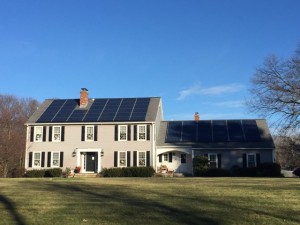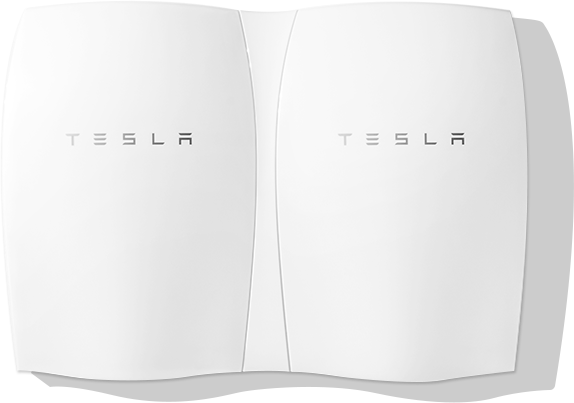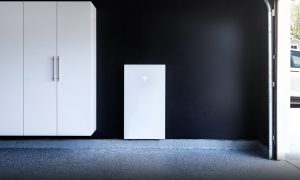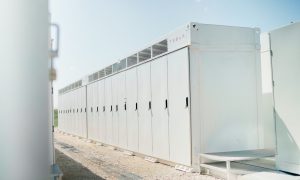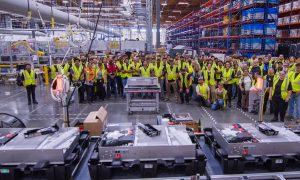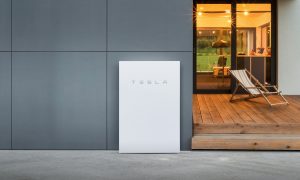Energy
Bloomberg Says Tesla Powerwall Doesn’t Make Sense
Bloomberg News says the Tesla Powerwall doesn’t make sense. So why have 38,000 folks signed up to own or lease one when deliveries won’t start for 6 months?
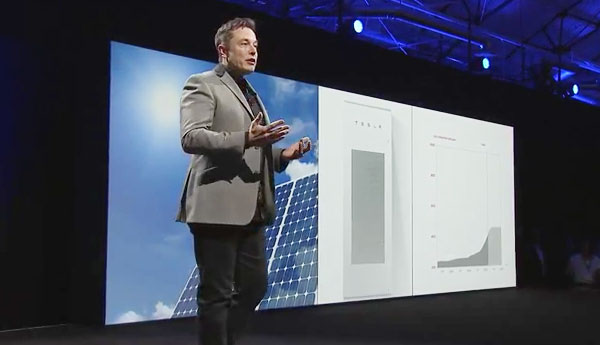
Bloomberg News questions whether the Tesla Powerwall — introduced to great fanfare on April 30 — makes economic sense. Their answer? It doesn’t — at least not now. Here’s why.
The Powerwall comes in two versions — a 7 kWh (kilowatt-hour) model and a 10 kWh unit. The smaller battery is design specifically for daily use. The larger battery is strictly a backup power supply.
SolarCity, Tesla’s sister company, has decided not to offer the 7 kWh battery with its rooftop solar systems. That battery “doesn’t really make financial sense,” SolarCity spokesman Jonathan Bass tells Bloomberg. That’s because customers can make money selling their excess solar power back to the grid during the day when rates are high rather than using it to charge up a battery.
Of course, the economics will vary considerably across the country. Not all states require utilities to accept electricity from home solar systems and each electric company has its own rate structure.
SolarCity Offers Larger Powerwall
SolarCity says it will only offer the 10 kWh battery to new rooftop solar customers. “Our residential offering is battery backup,” Bass said in an e-mail. Unlike the smaller unit, which is intended for daily use, the 10 kWh battery is designed for no more than 50 discharge cycles a year. Homeowners can buy it outright for $7,140, including an inverter and installation, or lease it for $15 a month for 9 years with an upfront payment of $5,000.
The 10 kWh battery is rated at 2 kilowatts of continuous power. Does that sound like a lot? It’s not. That’s only enough to run a hair dryer or 2 small window air conditioners for about 5 hours. To provide enough electricity to power a typical home would take eight Powerwall units working together. According to Bloomberg, that would cost $45,000 (if the nine year lease option is selected). There are no known discounts for multiple purchases at this time.
“It’s a luxury good—really cool to have—but I don’t see an economic argument,” said Brian Warshay, an energy and smart technologies analyst with Bloomberg New Energy Finance. Bloomberg suggests you could get the same back up capability from a $3,700 generator available at Home Depot.
Demand Is “Crazy”
The Powerwall that has captured the public’s imagination has a long way to go before it makes economic sense for most people. Even in Germany, where solar power is abundant and electricity prices are high, the economics of an average home with rooftop solar “are not significantly enhanced by including the Tesla battery,” according to an analysis by Bloomberg New Energy Finance.
None of this has dampened the enthusiasm of prospective Powerwall users. Since Elon Musk’s announcement last week, the company has received inquiries from 38,000 people. Demand is so strong, Tesla is considering using its GigaFactory exclusively for residential and commercial storage batteries instead of batteries for its automobiles. There are even rumors it plans to expand the GigaFactory, which isn’t even built yet. Musk says demand has been “crazy off the hook.” He acknowledges that the Powerwall is more expensive than grid power, but says, “that doesn’t mean people won’t buy it.”
If the numbers don’t add up, why would people be in such a frenzy to get a Powerwall of their very own? SolarCity’s Bass says, “There’s a tremendous amount of interest in backup power that’s odorless, not noisy and completely clean.” But its more than that. Some observers call it “The Prius Effect”. Once you think someone else has something new and sexy, you want one for yourself. It’s just human nature.
Elon Musk is a master at creating buzz and then leveraging it. Everywhere you look this week, there are news stories about the Powerwall and what a huge leap forward it is. If all the people who signed up after last week’s announcement follow through, all those new orders will amount to $800 million in new business for the company. The orders are continuing to pour in like a flood tide into the Bay of Fundy.
Tesla Drives Costs Down
Is there anything truly remarkable about the Tesla Powerwall? Yes, there absolutely is. Based on the asking price for the Powerwall, Tesla has managed to get the cost of its batteries down to $250 per kilowatt-hour, something the “experts” claimed couldn’t happen before 2020. That gives Tesla a sizable marketing advantage over other battery companies and that’s before the GigaFactory starts production. Once that comes online, battery prices will undoubtedly fall even more. Musk’s faith in economies of scale seems to be paying off.
What’s Ahead For Tesla?
The truth is that Tesla is really not in the “off the grid” home battery market right now, although there is talk about offering batteries to residents of Hawaii, where electricity costs triple what it does on the mainland. Tesla really has its sights set on commercial and utility scale products. Utility companies often charge commercial and industrial customers their highest rates.
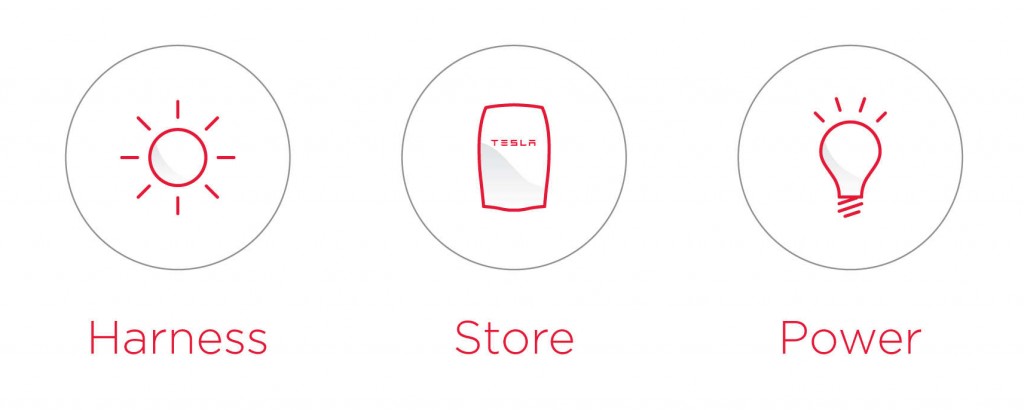
Business and industry can now charge their Tesla PowerPacks at night when rates are low. Or they can use solar panels to charge them during the day. Either way, they avoid buying electricity from utility companies at peak demand rates.
A battle is shaping up between energy makers and energy storage providers. The outcome will be nothing less than an upheaval in the way electricity is made and distributed. Battery storage is disruptive technology and there is no one who is more of a champion of disruptive technology than Elon Musk.
In 10 years, residential battery storage systems will be as common as stoves and refrigerators. No home will be without one. SolarCity’s Bass suggests that’s when the Tesla Powerwall will begin to make economic sense. Microgrids that soak up energy from the sun to charge grid scale batteries will be everywhere. Utility companies as we know them will become marginal players. The Rocky Mountain Institute predicts that demand for electricity from traditional utility companies will decline by 50% in the next 10 years.
As the market for electricity changes, there will be winners and losers. There is no question Elon Musk plans on being one of the winners.
Source: Bloomberg News
Energy
Tesla Lathrop Megafactory celebrates massive Megapack battery milestone
The Tesla Megapack is the backbone of Tesla Energy’s battery deployments.
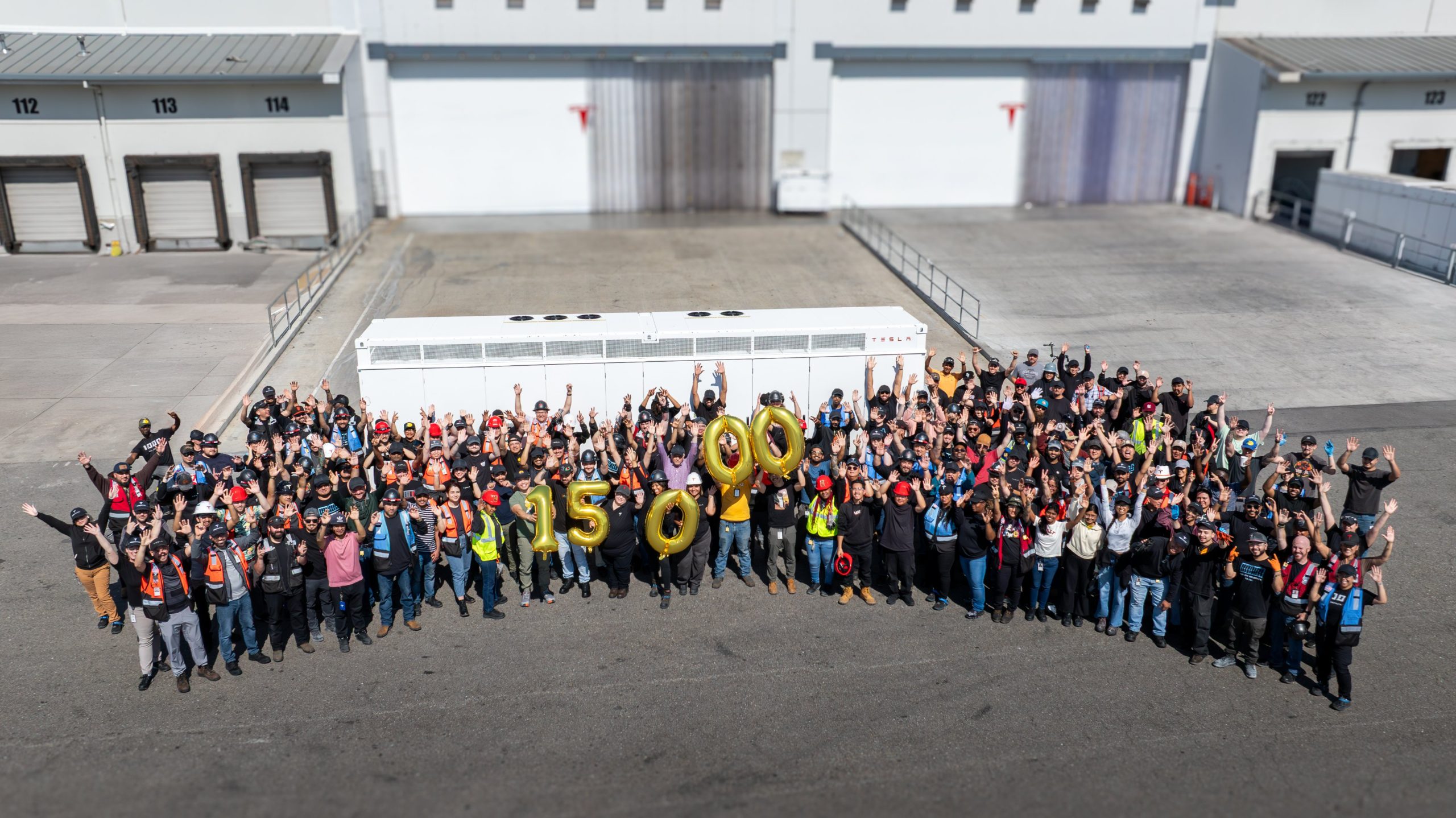
The Tesla Lathrop Megafactory recently achieved a new milestone. As per the official Tesla Megapack account on X, the Lathrop Megafactory has produced its 15,000th Megapack 2 XL battery.
15,000 Megapack Batteries
Tesla celebrated the milestone with a photo of the Lathrop Megafactory team posing with a freshly produced Megapack battery. To commemorate the event, the team held balloons that spelled out “15,000” as they posed for the photo.
The Tesla Megapack is the backbone of Tesla Energy’s battery deployments. Designed for grid-scale applications, each Megapack offers 3.9 MWh of energy and 1.9 MW of power. The battery is extremely scalable, making it perfect for massive energy storage projects.
More Megafactories
The Lathrop Megafactory is Tesla’s first dedicated facility for its flagship battery storage system. It currently stands as the largest utility-scale battery factory in North America. The facility is capable of producing 10,000 Megapack batteries every year, equal to 40 GWh of clean energy storage.
Thanks to the success of the Megapack, Tesla has expanded its energy business by building and launching the Shanghai Megafactory, which is also expected to produce 40 GWh of energy storage per year. The ramp of the Shanghai Megafactory is quite impressive, with Tesla noting in its Q1 2025 Update Letter that the Shanghai Megafactory managed to produce over 100 Megapack batteries in the first quarter alone.
Tesla Energy’s Potential
During the first quarter earnings call, CEO Elon Musk stated that the Megapack is extremely valuable to the energy industry.
“The Megapack enables utility companies to output far more total energy than would otherwise be the case… This is a massive unlock on total energy output of any given grid over the course of a year. And utility companies are beginning to realize this and are buying in our Megapacks at scale,” Musk said.
Energy
Tesla Megapacks powers the xAI Colossus supercomputer
Tesla Megapacks step in to stabilize xAI’s Colossus supercomputer, replacing natural gas turbines. Musk’s ventures keep intertwining.
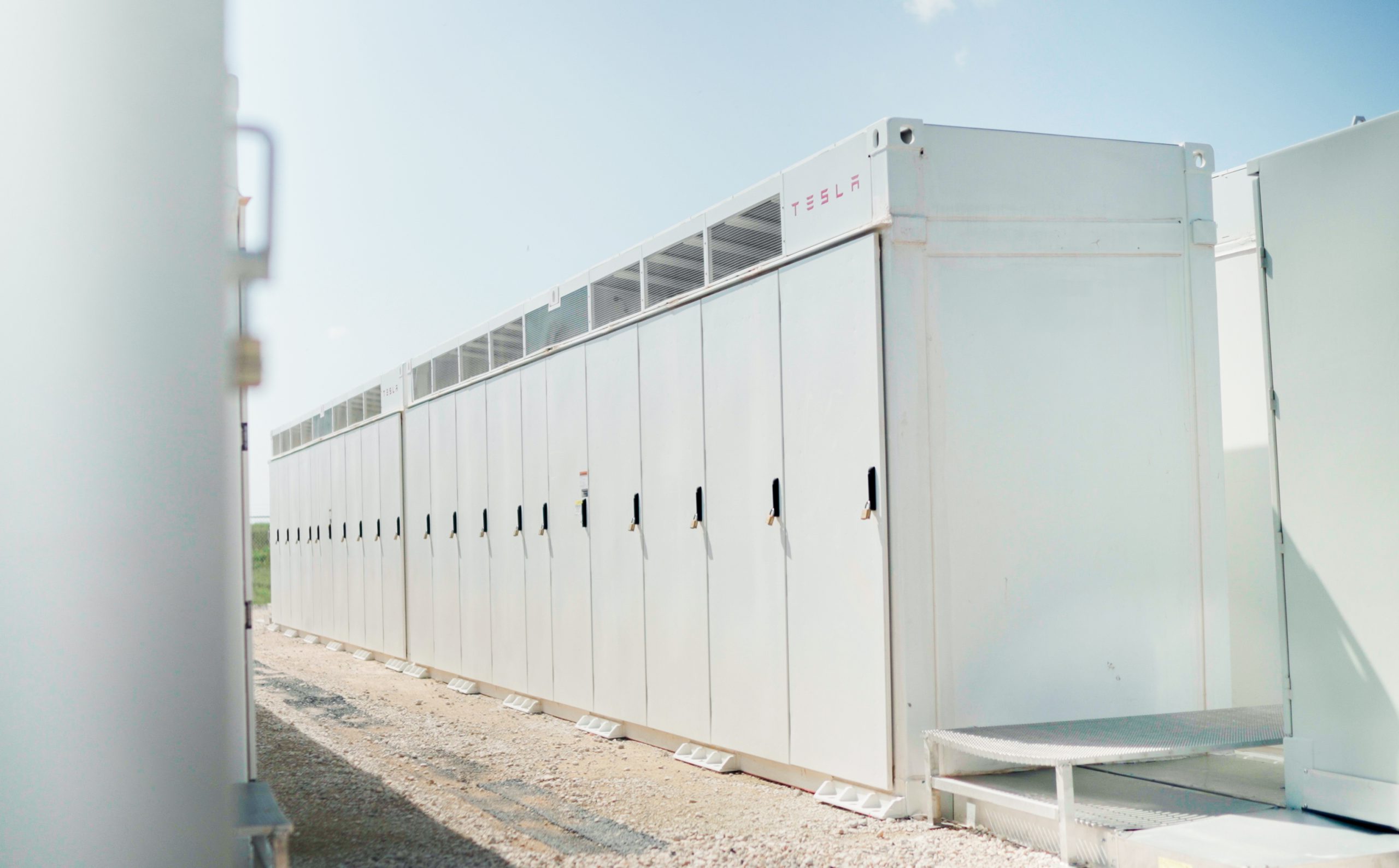
Tesla Megapack batteries will power the xAI Colossus supercomputer in Memphis to ensure power stability. The collaboration between Tesla and xAI highlights the synergy among Elon Musk’s ventures.
The artificial intelligence startup has integrated Tesla Megapacks to manage outages and demand surges, bolstering the facility’s reliability. The Greater Memphis Chamber announced that Colossus, recently connected to a new 150-megawatt electric substation, is completing its first construction phase. This transition addresses criticism from environmental justice groups over the initial use of natural gas turbines.
“The temporary natural gas turbines that were being used to power the Phase I GPUs prior to grid connection are now being demobilized and will be removed from the site over the next two months.
“About half of the operating turbines will remain operating to power Phase II GPUs of xAI until a second substation (#22) already in construction is completed and connected to the electric grid, which is planned for the Fall of 2025, at which time the remaining turbines will be relegated to a backup power role,” the Chamber stated.
xAI’s rapid development of Colossus reflects its ambition to advance AI capabilities, but the project has faced scrutiny for environmental impacts. The shift to Megapacks and grid power aims to mitigate these concerns while ensuring operational continuity.
The Megapack deployment underscores the collaboration among Musk’s companies, including Tesla, SpaceX, Neuralink, and The Boring Company. Tesla appears to be the common link between all of Musk’s companies. For example, The Boring Company built a tunnel in Giga, Texas. In addition, Musk has hinted at a potential collaboration between the Tesla Optimus Bot and Neuralink. And from January 2024 to February 2025, xAI invested $230 million in Megapacks, per a Tesla filing.
Tesla Energy reported a 156% year-over-year increase in Q1 2025, deploying 10.4 GWh of storage products, including Megapacks and Powerwalls. Tesla’s plans for a new Megapack factory in Waller County, Texas, which is expected to create 1,500 jobs in the area, further signal its commitment to scaling energy solutions.
As xAI leverages Tesla’s Megapacks to power Colossus, the integration showcases Musk’s interconnected business ecosystem. The supercomputer’s enhanced stability positions xAI to drive AI innovation, while Tesla’s energy solutions gain prominence, setting the stage for broader technological and economic impacts.
Energy
Tesla Energy celebrates one decade of sustainability
Tesla Energy has gone far since its early days, and it is now becoming a progressively bigger part of the company.
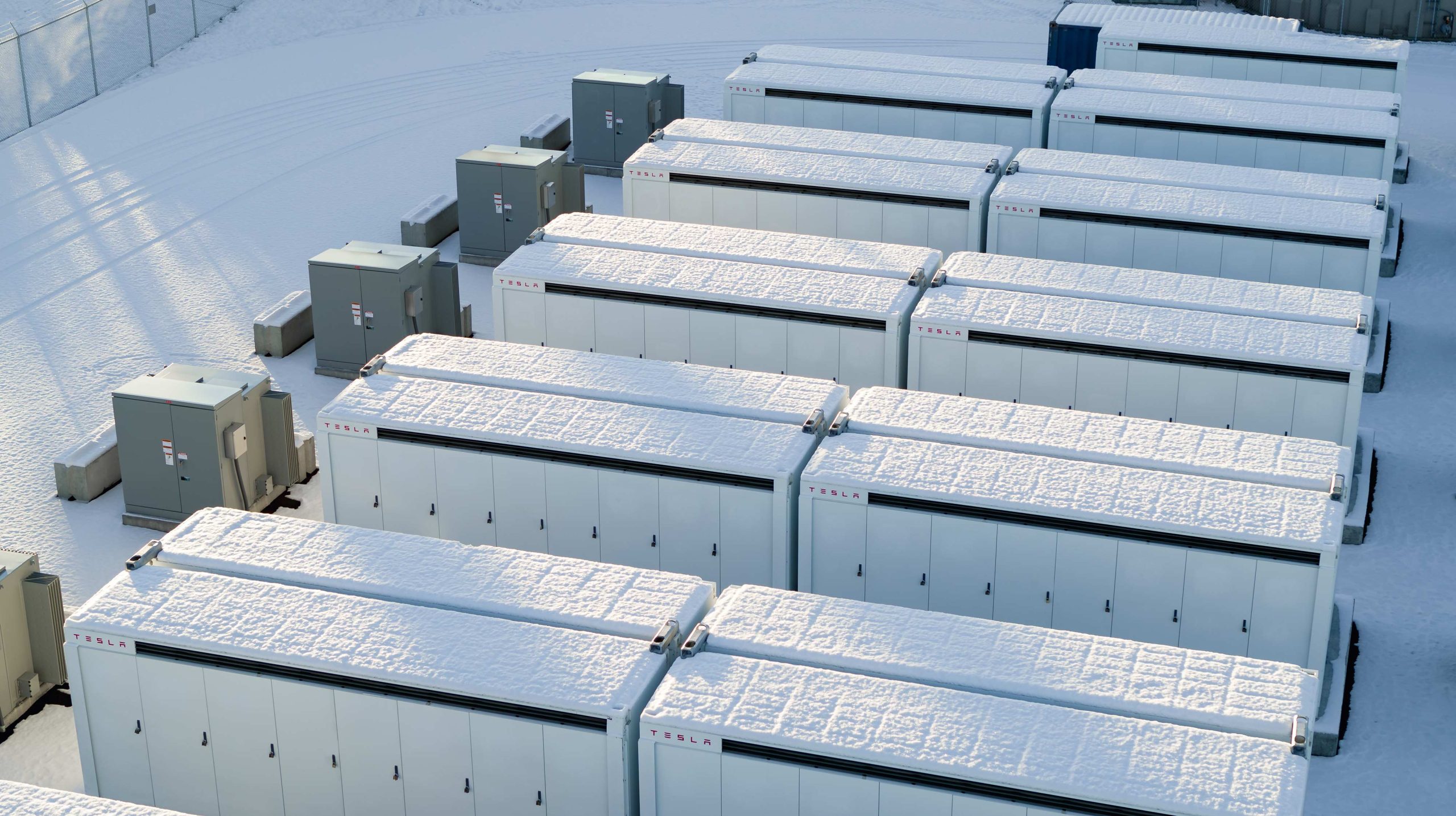
Tesla Energy recently celebrated its 10th anniversary with a dedicated video showcasing several of its milestones over the past decade.
Tesla Energy has gone far since its early days, and it is now becoming a progressively bigger part of the company.
Tesla Energy Early Days
When Elon Musk launched Tesla Energy in 2015, he noted that the business is a fundamental transformation of how the world works. To start, Tesla Energy offered the Powerwall, a 7 kWh/10 kWh home battery system, and the Powerpack, a grid-capable 100 kWh battery block that is designed for scalability. A few days after the products’ launch, Musk noted that Tesla had received 38,000 reservations for the Powerwall and 2,500 reservations for the Powerpack.
Tesla Energy’s beginnings would herald its quiet growth, with the company later announcing products like the Solar Roof tile, which is yet to be ramped, and the successor to the Powerwall, the 13.5 kWh Powerwall 2. In recent years, Tesla Energy also launched its Powerwall 3 home battery and the massive Megapack, a 3.9 MWh monster of a battery unit that has become the backbone for energy storage systems across the globe.
Key Milestones
As noted by Tesla Energy in its recent video, it has now established facilities that allow the company to manufacture 20,000 units of the Megapack every year, which should help grow the 23 GWh worth of Megapacks that have already been deployed globally.
The Powerwall remains a desirable home battery as well, with more than 850,000 units installed worldwide. These translate to 12 GWh of residential entry storage delivered to date. Just like the Megapack, Tesla is also ramping its production of the Powerwall, allowing the division to grow even more.
Tesla Energy’s Role
While Tesla Energy does not catch as much headlines as the company’s electric vehicle businesses, its contributions to the company’s bottom line have been growing. In the first quarter of 2025 alone, Tesla Energy deployed 10.4 GWh of energy storage products. Powerwall deployments also crossed 1 GWh in one quarter for the first time. As per Tesla in its Q1 2025 Update Letter, the gross margin for the Energy division has improved sequentially as well.
-

 Elon Musk4 days ago
Elon Musk4 days agoTesla investors will be shocked by Jim Cramer’s latest assessment
-

 News1 week ago
News1 week agoTesla Robotaxi’s biggest challenge seems to be this one thing
-

 Elon Musk2 weeks ago
Elon Musk2 weeks agoFirst Look at Tesla’s Robotaxi App: features, design, and more
-

 News2 weeks ago
News2 weeks agoWatch Tesla’s first driverless public Robotaxi rides in Texas
-

 News2 weeks ago
News2 weeks agoSpaceX and Elon Musk share insights on Starship Ship 36’s RUD
-

 News1 week ago
News1 week agoWatch the first true Tesla Robotaxi intervention by safety monitor
-

 News2 weeks ago
News2 weeks agoTesla has started rolling out initial round of Robotaxi invites
-

 Elon Musk2 weeks ago
Elon Musk2 weeks agoTesla to launch in India in July with vehicles already arriving: report

